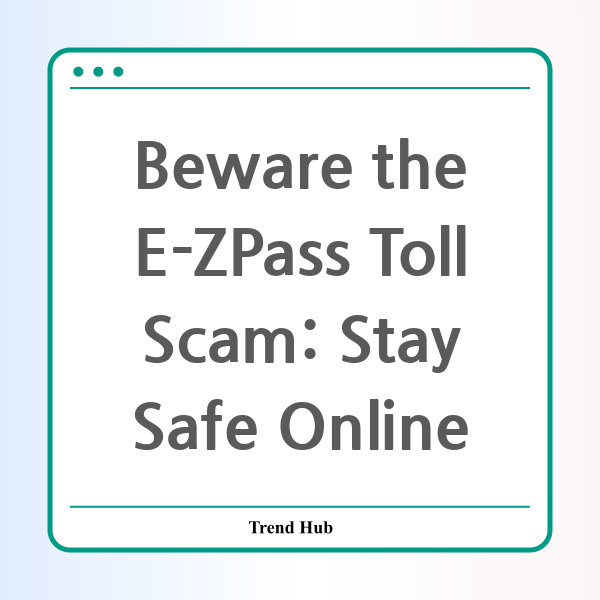* This website participates in the Amazon Affiliate Program and earns from qualifying purchases.

Have you recently received a text message about an outstanding toll from E-ZPass? If so, you’re not alone. As scams targeting E-ZPass users escalate, it’s imperative to understand how to protect yourself from these deceptive tactics. Below is a comprehensive guide on recognizing and avoiding the E-ZPass toll scam so that you can keep your personal information safe and secure.
This growing trend of E-ZPass scams typically involves fraudulent text messages claiming that you owe money on your toll account. For instance, one message currently circulating in New Jersey warns recipients that they must pay an outstanding toll balance by a specific date to avoid penalties or legal action. It also includes a link that begs you to click for further details. If you receive such a message, it’s crucial that you do NOT click on any links or respond with personal information.
These scams, often referred to as "smishing," target both iPhone and Android users across the country. According to reports, scammers utilize sophisticated techniques to make these messages appear legitimate, even imitating the language used by actual toll agencies. The FBI advises that if you receive a message suggesting you owe unpaid tolls, consider it a strong indicator of a scam.
How to Spot an E-ZPass Toll Scam
Here are some signs that the message you received is likely part of a scam:
- Unexpected notices: If you didn’t recall missing any tolls, treat any sudden violation notice as suspicious.
- Urgent tone: Scammers often create a sense of urgency, pressuring you to pay immediately or threatening consequences.
- Unusual sender information: Inspect the email addresses and links. Fraudulent messages often have misspellings or unusual domain names.
- Requests for personal information: Legitimate toll agencies will not ask for personal details via text.
What to Do If You Receive a Scam Text
If you suspect you’ve received a fraudulent message, follow these steps:
- Do not click any links. Ignore any prompts to click or provide personal information.
- Contact E-ZPass directly: Visit their official website or call customer service to verify any claims.
- Report the scam: You can inform the Federal Trade Commission (FTC) or the Anti-Phishing Working Group about the fraudulent message.
- Monitor your accounts: Check your bank and credit card transactions for any suspicious activity.
- Change your passwords: If you have clicked on a suspicious link, change your passwords immediately to secure your accounts.
How to Protect Yourself From Future Scams
Protecting yourself from scams requires vigilance and proactive measures. Here are a few strategies to consider:
- Register for official accounts: Set up an official E-ZPass account so you can manage payments directly, rather than relying on notifications.
- Use credit cards for payments: Credit cards provide better protection against fraud compared to debit cards.
- Stay informed: Follow consumer protection agencies and your local toll agency for alerts regarding new scam tactics.
- Enable spam alerts: Many mobile carriers offer services to filter spam messages, so be sure to take advantage of these options.
Ultimately, while the E-ZPass toll scam is troubling, awareness is your best defense. Keep this information in mind to help you avoid falling victim to scams that exploit your trust. By staying vigilant and informed, you can protect your personal information and financial assets from potential threats.
* This website participates in the Amazon Affiliate Program and earns from qualifying purchases.